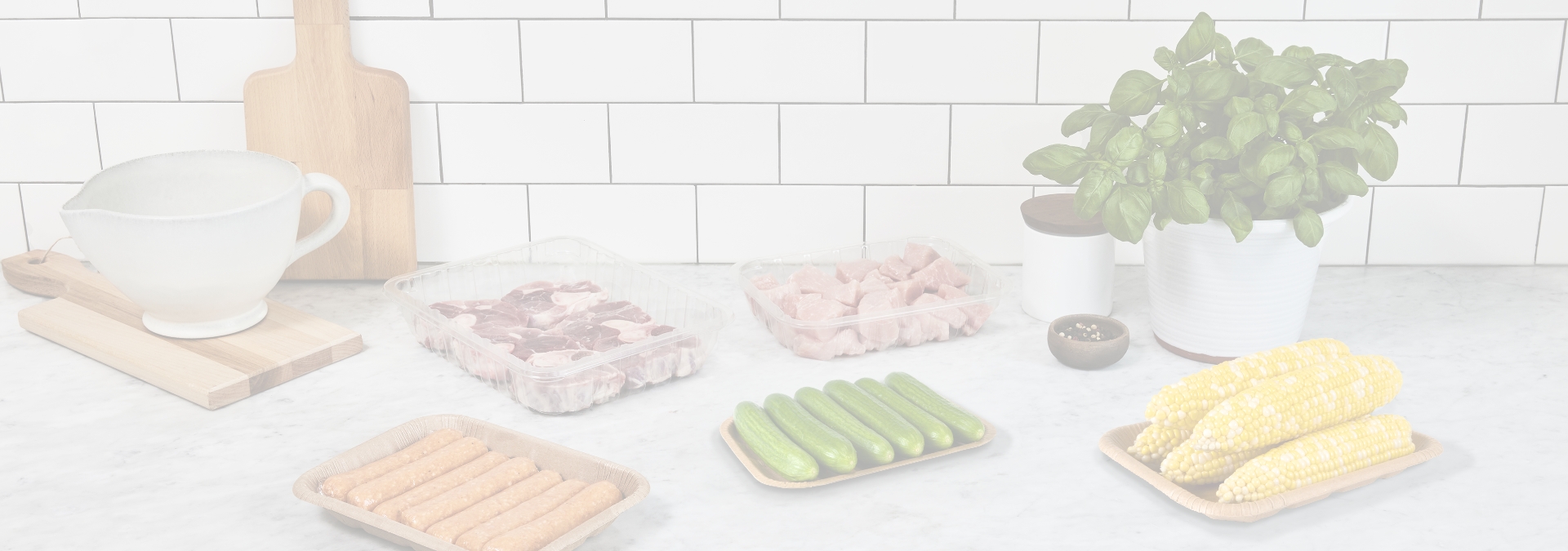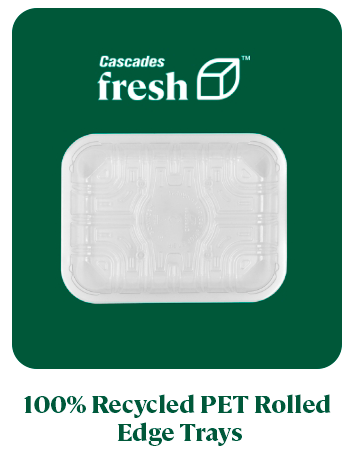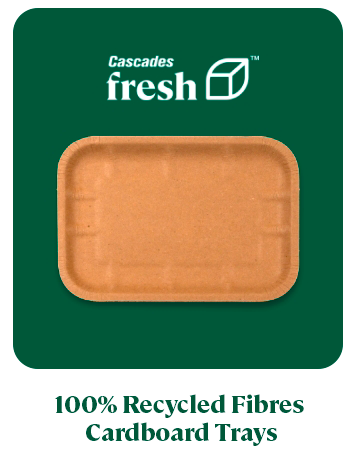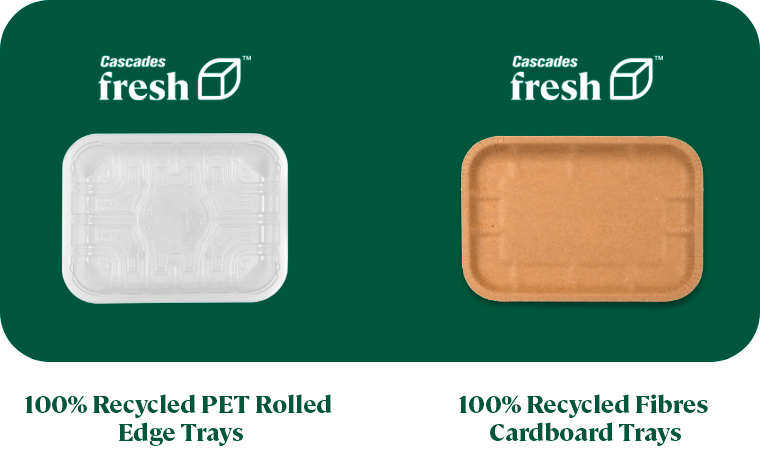As environmental concerns continue to escalate, the food packaging industry faces a critical imperative: transitioning away from foam trays. With regulations tightening across North America, embracing sustainable alternatives not only ensures compliance but also shields your business from costly penalties.
Moreover, as consumer demand increasingly leans toward eco-friendly products, adopting sustainable alternatives can signal your commitment to environmentally conscious practices,[1] attracting a broader market of discerning consumers. This shift away from foam trays showcases your commitment to reducing environmental impact and underscores your company's dedication to addressing persistent pollution associated with traditional packaging materials.
In today's market, sustainability is more than just a trend; it’s a fundamental expectation. That’s why we've compiled a comprehensive guide packed with all the essential information you need to thrive in a more environmentally sustainable and resilient future.
Material Matters
The very first step in the journey toward sustainable packaging is choosing the most appropriate food tray material. To make an informed decision, you’ll need to conduct a series of tests to compare the material's performance with that of foam and validate the results with your suppliers.
Opt for trays made from environmentally sustainable materials, such as 100% recycled cardboard fibres or RPET (Recycled Polyethylene Terephthalate), made from materials with less environmental impact. These will help reduce the amount of waste sent to landfills while promoting the circular economy by repurposing existing resources.
When selecting a tray, it's important to consider the environmental impacts throughout its entire life cycle; from extraction of raw materials to disposal. Conducting a lifecycle assessment provides a more complete picture of environmental impacts for decision-makers to choose a product aligned with their sustainability goals.
For instance, Cascades 100% recycled PET trays reduce your impact on climate change by 68% compared to those made from virgin foam.[2] Cardboard, a material that can be easily recycled, can also replace other hard-to-recycle options. Compared to virgin foam trays, our 100% recycled fibres cardboard trays reduce greenhouse gas emissions by 33%.[3]

Durability and Functionality
While prioritizing sustainability is important, ensuring that alternative solutions meet food product storage and transportation requirements is equally vital. Look for trays with stiffness akin to foam to maintain product integrity. Consider features like rolled edges to prevent film tearing, minimizing product loss and the need for repackaging.
Reach out to both current and potential suppliers to gain a deeper understanding of their products. This proactive approach ensures there are no surprises along the way. Below are some key questions to guide your discussions:
- How does your product’s stiffness fare in a moist environment?
- Are sustainable trays equal to foam in terms of storage and stacking?
- How do they perform on automated high-speed lines?
- What is their denesting speed compared to foam trays?
- Are they designed for high-speed packaging equipment without requiring major changeovers
Regulatory
Compliance
Navigating the Rules
Stay informed about your area's current and upcoming foam bans and ensure compliance with these regulations in advance. Explore suppliers offering a diverse range of materials to address various scenarios and adapt to different regulatory requirements.
Ensure alternative trays align with local packaging material regulations, complying with FDA and Health Canada standards to uphold the safety and quality of your packaged goods.
Certifications and
pre-qualifications
Trustworthy Seals of Approval
Prioritize trays with reputable certifications like FSC® (Forest Stewardship Council) for responsibly sourced materials or compostability certifications like CMA (Compost Manufacturing Alliance). Opt for products from SFQ (Safe Food Quality) facilities, guaranteeing adherence to rigorous quality standards. Additionally, consider trays prequalified by How2Recycle®, which offer transparent guidance on recyclability.
Customer Perception
A Marketing Advantage
In an era of heightened environmental consciousness, businesses embracing sustainable packaging often gain a positive marketing advantage. Research indicates that 60% of North American consumers consider it important to buy products in recyclable or environmentally friendly packaging and see themselves as environmentally conscious.[4]
By using recycled cardboard or RPET trays, food industry businesses not only meet the growing demand of environmentally conscious consumers but also enhance their brand reputation, positioning themselves at the forefront of the competition.
Educate and Inspire Change
Over the past three years, zero-waste product sales have surged by 34%, while options with a reduced carbon footprint have increased by 12%.[5] Hence, it's increasingly vital for brands to articulate their sustainability strategies effectively.
Nielsen IQ data reveals that 28% of consumers prefer learning about this information from news and media outlets. This is closely followed by information directly on product packages at 27%.[6]
Consider two key factors:
- Product packaging claims offer crucial information at the point of purchase.
- Staying competitive involves recognizing standard claims in your category and those that distinguish your brand.
Take proactive measures to engage and educate your staff, customers, and stakeholders about transitioning to sustainable packaging. Transparently communicate the performance advantages of new packaging compared to foam and emphasize the positive environmental impact of your decision. This fosters support within the community and inspires others to make sustainable choices.
In conclusion, transitioning from foam trays to sustainable alternatives is a multifaceted process requiring careful consideration of materials, regulations, certifications, and consumer perception. By following this comprehensive guide, you can make informed decisions that benefit your business and the planet.
Don’t be afraid to embrace this change and allow your commitment to responsible business practices to shine through in every food package you deliver. After all, the benefits of this transition are far-reaching, offering a brighter future for generations to come.
1, 5, 6 : NielsenIQ_2022_Sustainability_ESG_eBook.
2, 3 : CASCADES Life Cycle Assessment (LCA), AGECO Group; February 2023.
4 : Buying Green Report 2023, Euromonitor International study for Trivium Packaging
7 : Eco-design Principles - Cascades




